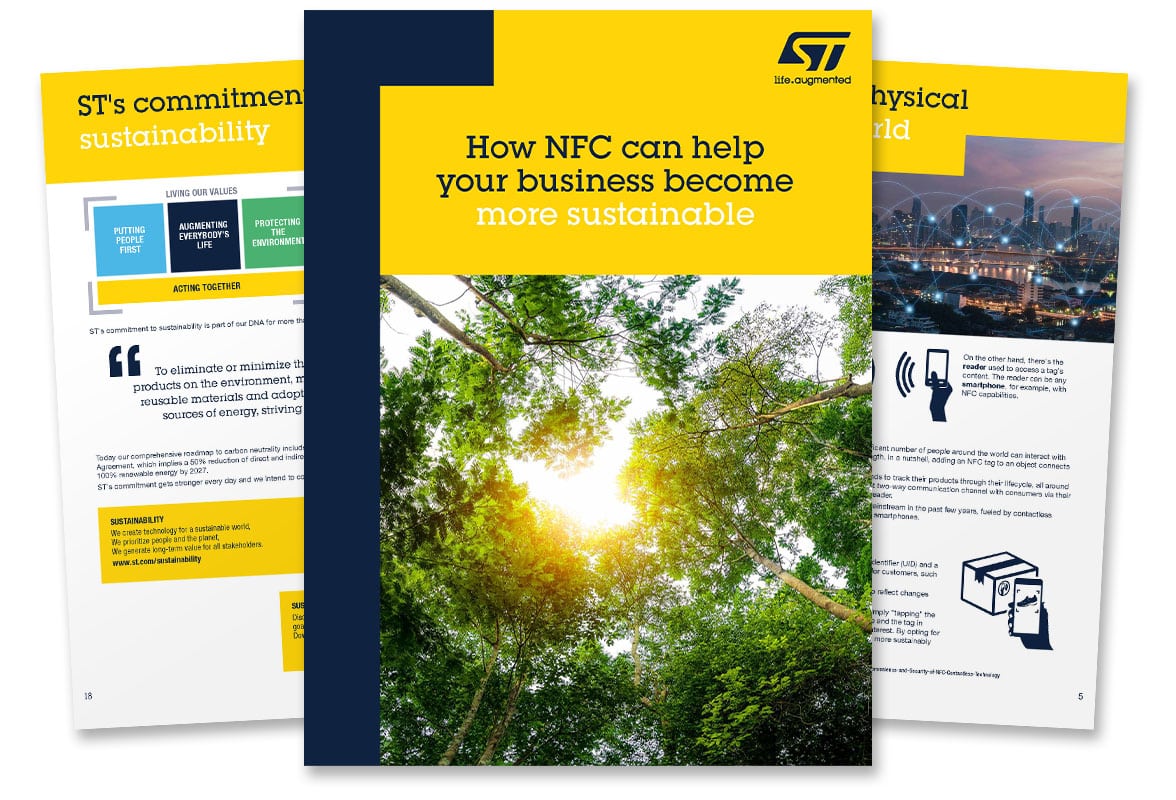
KNOWLEDGE CENTRE: A new white paper from STMicroelectronics that provides consumer goods manufacturers with in-depth insight into how they can use NFC technology to support their sustainability initiatives is now available to download from the NFCW Knowledge Centre.
‘How NFC can help your business become more sustainable’ describes how NFC can be used to overcome many of the obstacles of today’s circularity initiatives, explains how all stakeholders — from brands to retailers and consumers — can take advantage of NFC throughout the product lifecycle and gives examples of brands which are already using NFC as part of their sustainability initiatives.
NFC technology can deliver particular value, the paper explains, when used in sustainability initiatives for products that:
- Have a complex composition and are made of several components and materials
- Provide traceability services and tracking features
- Are likely to change ownership through, for instance, the second-hand market
- Are durable over time and will therefore lead to multiple uses
- Can be refilled, repurposed, or recycled.
The paper then explores in detail eight ways in which NFC can assist with sustainability:
- Consumer product sustainability information: At the presale stage, consumers can be given key information about the product of interest that is displayed via NFC tags embedded in each item.
- Second-life advice: At the end of a product’s lifecycle, tags can inform consumers what they can do with the used item.
- Responsible supply chain management: Thanks to its track and trace functionality, NFC technology can help keep track of products and contribute to optimising resources in order to avoid overproduction or inventory issues.
- Circularity: In addition to contributing to more optimised supply chains, the track and trace function can help keep track of products throughout their lifecycle, therefore enabling circularity.
- Product eco-design: Eco-designing products is a major challenge for consumer brands. Embedding NFC tags can help brands rethink their new product and packaging options by enabling refillable solutions.
- Health and safety: While sustainability is often defined as protecting the environment, ensuring people’s safety is another key dimension. There are many factors that may potentially harm or have an adverse effect on people’s health and safety. Here, too, NFC tags can help protect people in their daily lives by informing them of product instructions and ensuring product authenticity and integrity.
- Consumer reward programmes: By embedding NFC tags in goods, consumers can keep track of their sustainable actions and be rewarded accordingly, through credits or other incentive schemes.
- Product sustainability over lifecycle: The journey begins with programming the product’s NFC tag with information, such as the product composition, traceability data and recycling information. Consumers can then access that information in-store and, after purchase, can access a variety of other NFC functions including registering the product and activating the warranty. At the end of its life, the recycling plant can then read the NFC tag to access materials information and recycling instructions.
“ST’s commitment to sustainability is part of our DNA for more than 25 years,” the authors say. Multiple ST25 NFC tags and readers already carry the Sustainable Technology Label by ST, which is awarded using strict criteria to flagship products that demonstrate sustainable benefits for people and the environment.
Find out more and download the paper from the NFCW Knowledge Centre here.